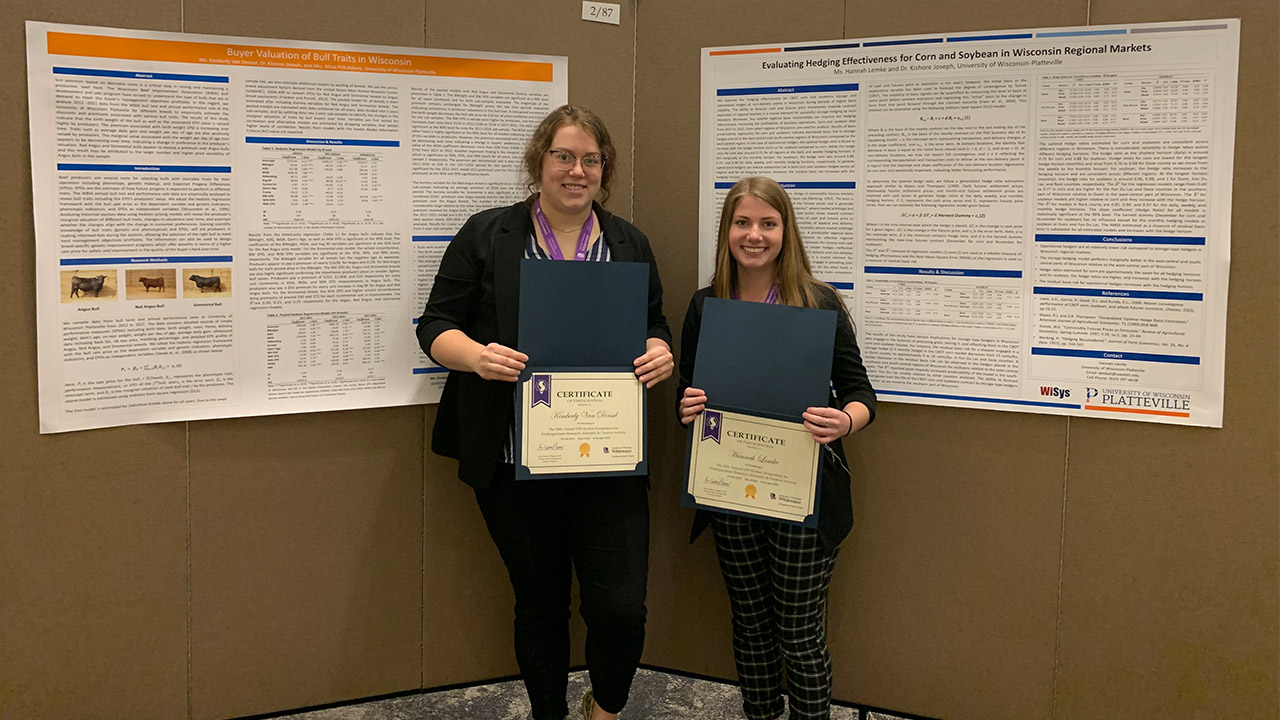
Two students from the University of Wisconsin-Platteville School of Agriculture, Kimberly Van Donsel and Hannah Lemke, presented research posters at the University of Wisconsin System Symposium at UW-Whitewater last month.
Van Donsel, a senior and double major in agribusiness and animal science, presented her research “Buyer Valuation of Bull Traits in Wisconsin” at the event. She analyzed the historical Wisconsin Beef Improvement Association dataset from 2012 to 2022 to identify how different bull traits are valued by producers. This important study helped reveal the producer’s marginal valuation of different bull traits and the changes in their valuations over time. The results from the study can be used to design breed-specific genetic improvement programs which offer benefits in terms of a higher sale price for sellers and improvement in the quality of the buyer’s herd over time. This study was funded through the College of Business, Industry, Life Science and Agriculture 2022 Undergraduate Research and Creative Endeavor (URCE) Grant. Van Donsel was mentored by Dr. Kishore Joseph, assistant professor of agribusiness, and Alicia Prill-Adams, assistant farm director of Pioneer Farm.
Hannah Lemke is a junior in the Agribusiness program and presented the research poster “Evaluating Hedging Effectiveness of Corn and Soybean in Wisconsin Regional Markets” at the symposium. Her work analyzed the hedging effectiveness of Chicago Board of Trade corn and soybeans storage and operational hedges at non-delivery points in Wisconsin from 2015 to 2021. Lemke identified decreased basis risk in storage hedges placed in the east-central and south-central regions of Wisconsin compared to the west-central region. The study also revealed that operational hedgers are at relatively lower risk compared to storage-type hedgers in Wisconsin regional markets. In the case of operational hedges, the optimal hedge ratio is found to increase with the hedge horizon more so for soybean compared to corn. The results of the study are critical to regional grain and oilseed merchandisers, as the ability to forecast cash and futures price convergence is a crucial element for successful storage hedging by local elevators in Wisconsin, who engage in providing cash contracts for corn producers which they offset in futures markets. In addition, the use of appropriate hedge ratios for different hedging horizons can improve the hedging effectiveness by reducing the residual basis risk associated with operational hedging. This research study was part of a research project funded by the 2021-22 WiSys Ignite Applied Research Grant, and Lemke was mentored by Dr. Kishore Joseph.